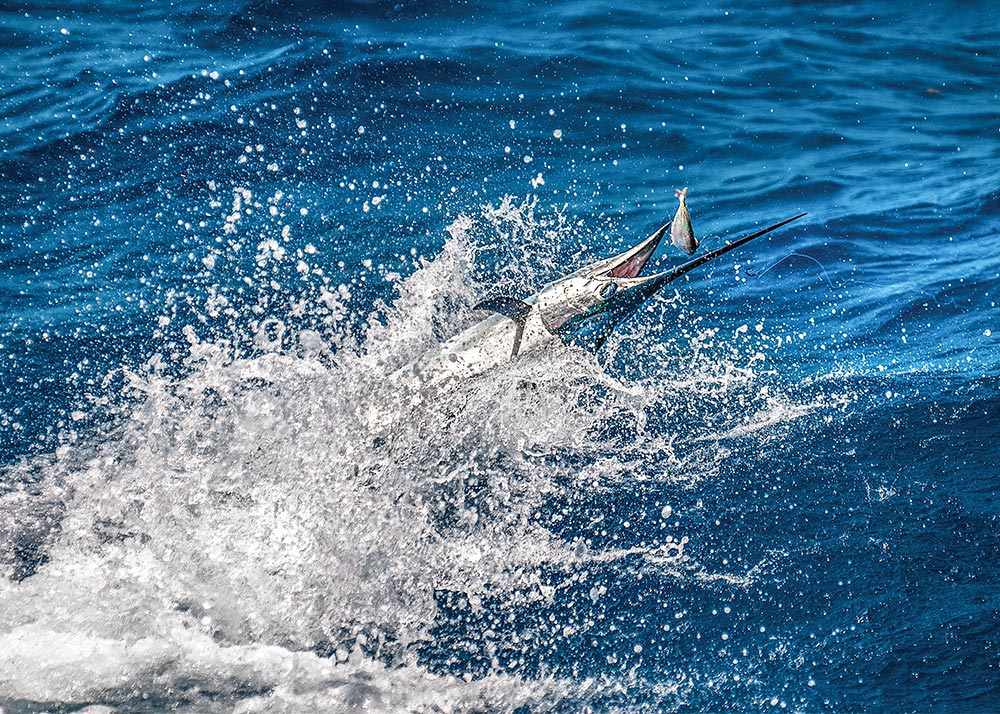
Colbalt-purple, northward-flowing ocean water out front of Miami makes magic, especially in the spring. Terry Flora and I barely finished setting out a spread of live baits between Haulover Inlet and Government Cut before the first sailfish came to play. Flora fought the fish in 4- to 6-foot seas, earning a boatside pic prior to the release. With a brisk easterly breeze keeping seas spiked, air temps pleasant, and that rich vein of water close in, we released six out of 10 sails we hooked, but, by Miami standards, that’s common in March, April and on into May.
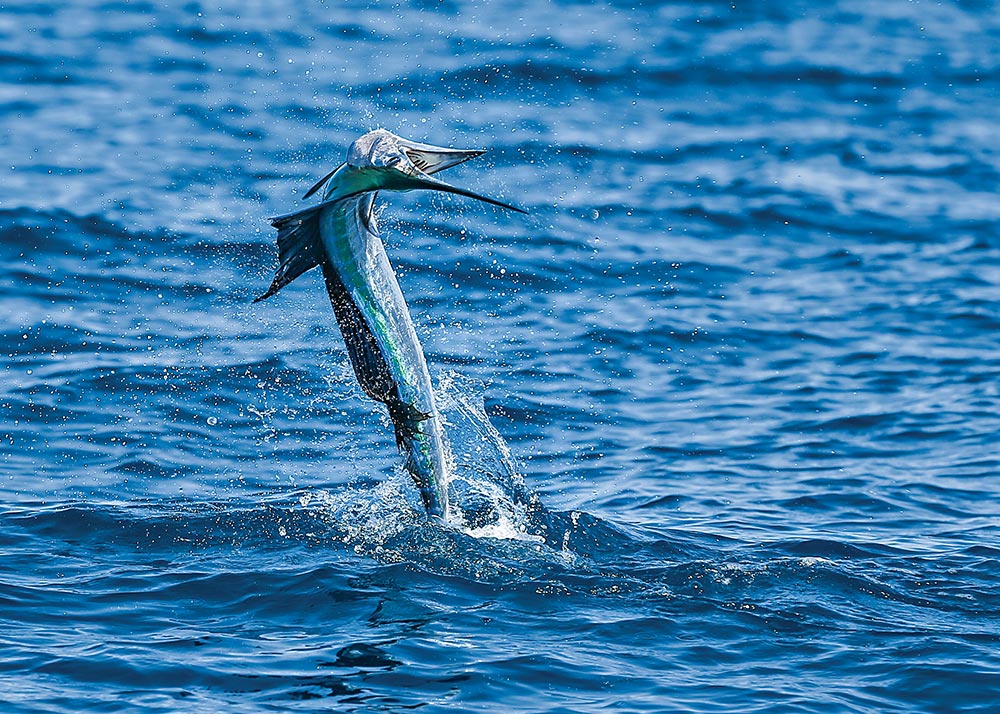
Where the Action Is
Miami’s spring sailfish run is usually ushered in by double, triple and quadruple hookups, as opposed to picking off a fish here and there. This push of fish represents their annual southerly migration into the local waters. The oceanic highway between Sunny Isles in North Miami-Dade and Pacific Reef Light to the south accounts for astonishing numbers of sailfish releases in the springtime.
Read Next: Sailfish Season Never Ends on the East Coast
“Miami’s traditional sailfish season used to be December through April,” says Capt. Dean Panos of Double D Charters. “For years, January and February were spectacular here; now it’s a relatively quiet time. That’s because the fish are remaining north of Palm Beach, and they were even farther north than that this year. Now our peak sailfish season begins in March.”
The Biological Clock
Major sailfish populations begin arriving off the Carolinas in October, off North Florida beginning in November, off the St. Lucie coast in late November and into December, and the Martin and Palm Beach counties coasts in January and February. However, this past December, January and February, vast numbers of fish remained between Port Canaveral and St. Augustine, leaving sketchy action to the south. Miami will most certainly see these fish later in the spring, and from there the sails will rush past the Keys and spread out into the Caribbean and Gulf.
To the Beat of a Different Drummer
“These fish are pushing south and move when they feel changes in water temperatures,” Panos says. “It’s really no longer a cold-front-dependent fishery, given Florida’s anemic winters. What makes it happen off Miami in the spring is blue water and a north current. The Gulf Stream pushes closer in, and it’s a matter of finding that color and current over traditional sailfish depths, between 100 and 200 feet.”
Read Next: Sailfish in the Shallows
Panos maintains that specific wind directions aren’t crucial for solid action. “During spring, a southeast wind can be as good or better than a northeast wind,” he says. “Again, it’s about blue water and current, locating packs of fish and staying with them. Powder-blue water from 120 feet on in can also produce excellent fishing.”
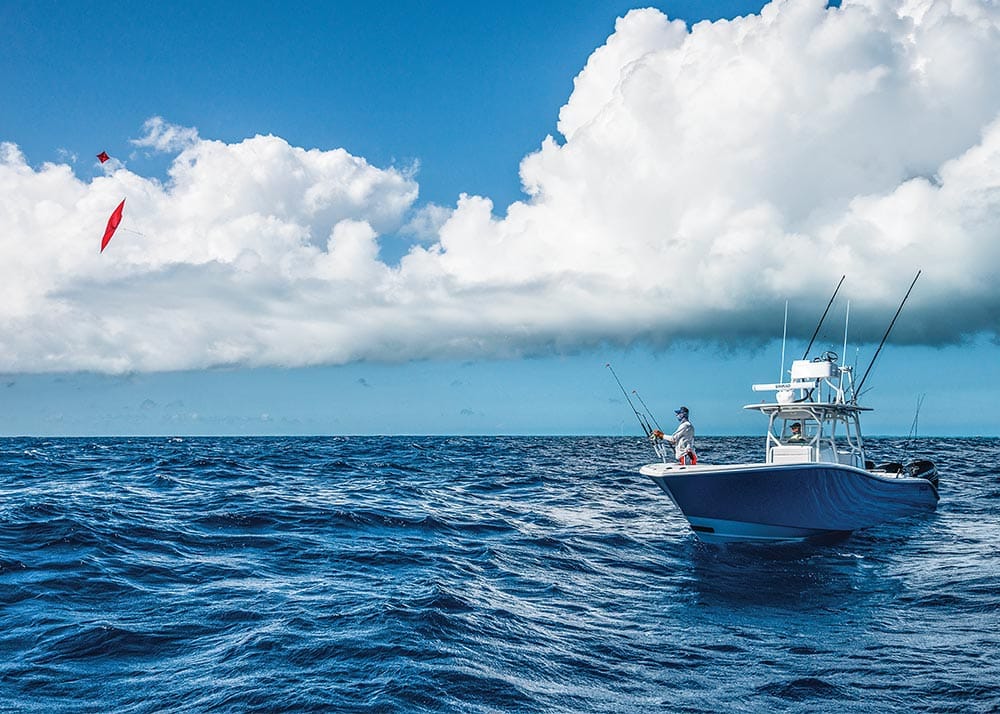
Stick and Move
Patience and aggressiveness go hand in hand for running up the numbers. Panos explains that a spread of kite baits could easily get covered by packs of sailfish. When flying dual kites, for example, sails may first encounter baits dangling from the northernmost one. Before coming tight to these fish, Panos suggests pausing just long enough for additional fish to reach the baits on the second kite.
“Once you find a pack of sails, if nothing more happens within 10 minutes, make a move,” he says. “Get ahead of that pack by a quarter-mile or so, reset your kites and baits, and wait for those same fish to catch up to you.
“If the fish are swimming south 2 to 3 miles per hour, and you’ve been sitting for 10 minutes, they’ll be about a half-mile south of you. Note the exact depth where you found them, and set up on the same depth once you make your move.”
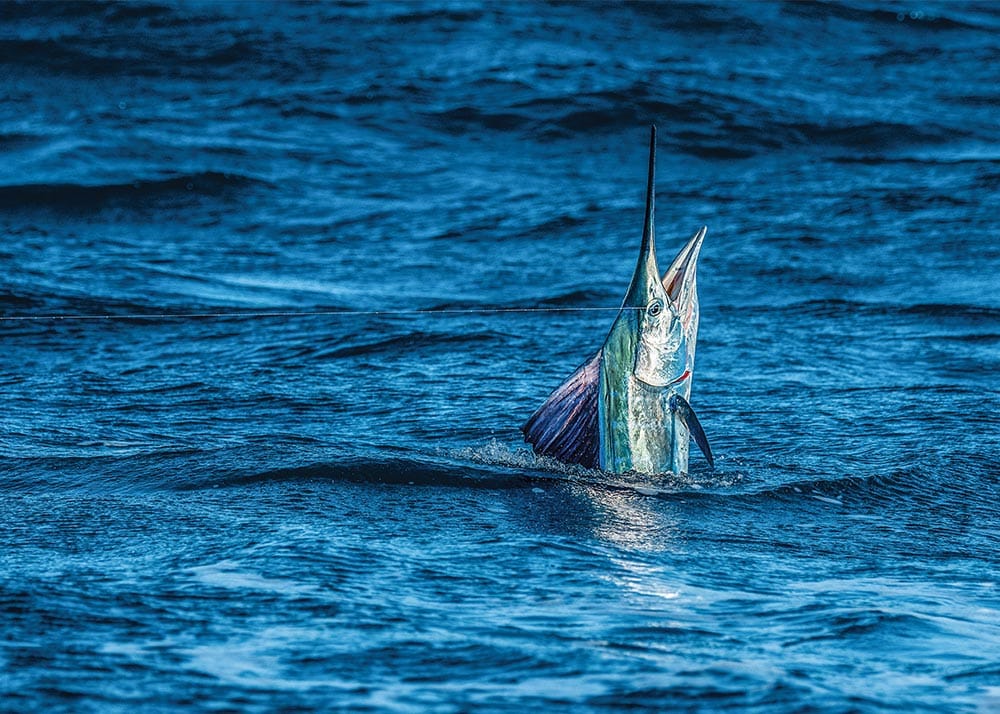
Panos power-drifts with two kites, working along edges, remaining within active zones, and searching for fish. “It’s extremely visual fishing,” he says. “Look for edges, bait concentrations, packs of cruising sails, tailing sails (if the right conditions exist), and free-jumpers. If you see a free-jumper, get a quarter-mile ahead, set your baits, and wait for that pack to come to you.
“When fishing is tough, explore outside that 100- to 200-foot zone,” Panos says. “Sometimes clean water and current may be out deeper, and sometimes the fish are shallower.
“I once drifted into 40 feet of water and saw hundreds of sailfish swimming by. So, don’t overlook those 60- to 90-foot zones either.”
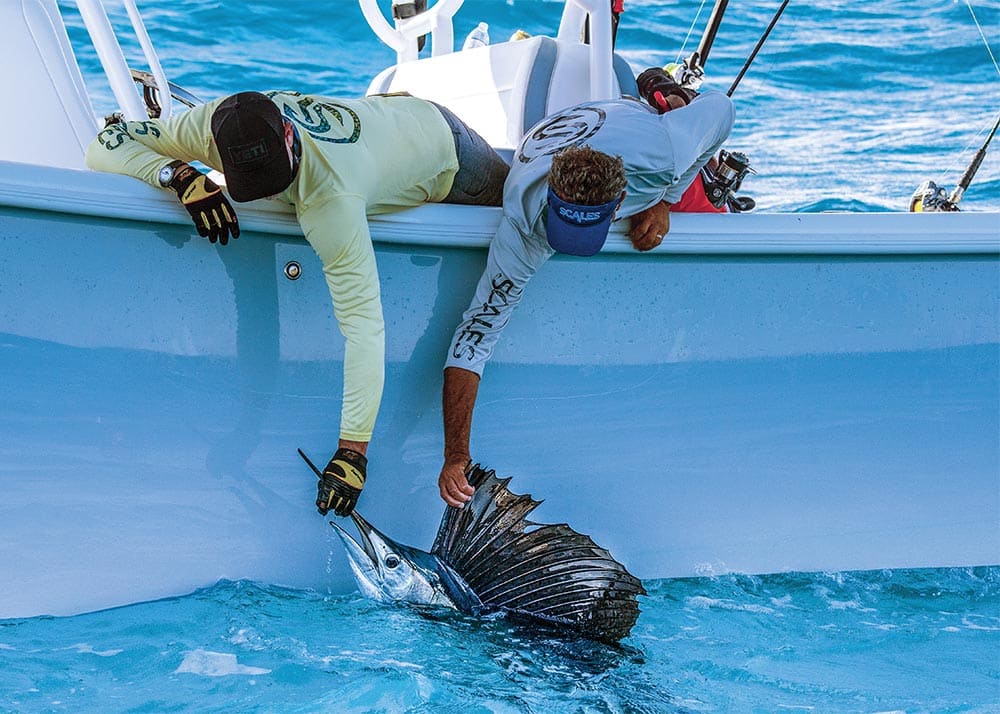
Enjoy the Encounters
Springtime sails are big, so expect many in the 50-, 60- and even 70-pound class. This makes for spectacular challenges on 20-pound tackle. Conventional reels with plenty of line capacity are ideal for the kites, whereas smaller conventional and midsize to large spinning outfits are perfect for flat and deep lines. Fast retrieve ratios are also beneficial for keeping taut to those highly spirited sails.
Read Next: Bahamas Dolphin and Tuna
Stealth counts too, especially in clean water, with 30-pound fluoro leaders standard. When fighting a large sailfish with such a light leader, simply back off the drag some. In-line circle hooks from 2/0 to 4/0 cover live baits, from pilchards, cigar minnows and herring to blue runners and goggle-eyes. And keep a few 20-pound-class pitch rods ready for free-swimming sailfish.
Hands down, come spring, Miami hosts some of the finest and fastest light-tackle sailfishing anywhere.
SWS Planner – Miami Spring Sailfish
What: Atlantic sailfish
When: March through May
Where: Off Miami-Dade County
Who:
North Miami-Dade – Capts. Dean Panos
954-805-8231
doubledcharters.com
Downtown Miami – Capt. Jimbo and Rick Thomas
305-374-4133
Miami Beach – Capt. Bouncer Smith
305-439-2475
captbouncer.com
Key Biscayne – Capt. Jimmy David
305-361-9318
landhsportfishing.com
Coconut Grove – Capt. Ray Rosher
305-596-0419
missbritt.com
Bait
You’ll need good live bait for sailfish. If you’d rather spend time fishing than catching bait, here’s who to contact:
Haulover Inlet – Greenline Live Bait
(pilchards, threadfins)
786-202-0884
Max Live Gogs
(goggle-eyes, pilchards, threadfins)
786-277-6842
Miami Beach – Jimmy Lewis
(goggle-eyes, pilchards, threadfins)
305-725-8807
Frank Ashley
(goggle-eyes, pilchards, threadfins)
305-992-0565
SWS Tackle Box – Miami Spring Sailfish
Kite-Fishing
Reels: Penn Fathom 40NLDHS, 7.1:1 retrieve ratio; Penn Fathom 30LDLH, 5.3:1 retrieve ratio; or equivalents
Rods: Penn Ally, 7-foot, for 15- to 25-pound line, or equivalent
Line: 20-pound Sufix Superior monofilament, or equivalent
Leader: 30-pound Sufix Invisiline fluorocarbon, or equivalent
Hooks: VMC Tournament Circle 4/0, model No. 7387
Flat Lines
Reels: Penn Fathom 30LDLH, 5.3:1 retrieve ratio; Penn Spinfisher VI 7500; Penn Spinfisher V 8500 (Live Liner)
Rods: Penn Ally, 7-foot, for 15- to 25-pound line; Penn Bluewater Carnage II, 7-foot, for 15- to 30-pound line
Line: Sufix Superior monofilament, 20-pound
Leader: Sufix Invisiline fluorocarbon, 30-pound
Hooks: VMC Tournament Circle 4/0, model No. 7387
Where is the best place to catch a sailfish?
Some of the best destinations for sailfish are off the coasts of Florida, Costa Rica, Guatemala, and Mexico in the Western Atlantic, as well as Hawaii, Australia, and Ecuador in the Pacific Ocean. These areas offer prime sailfish habitats with nutrient-rich waters and baitfish populations.
Is sailfish a good eating fish?
While sailfish are edible, they are not considered a prime food fish due to their high levels of mercury and their relatively tough, dry flesh. As a result, sailfish are more prized as a sport fish and are often released after being caught by anglers.
Do sailfish come close to shore?
Yes, sailfish can often be found relatively close to shore in certain areas, especially near deep water trenches, canyons, or drop-offs where they can feed on baitfish and smaller fish. However, they typically prefer offshore waters and are most abundant several miles from the coastline.









